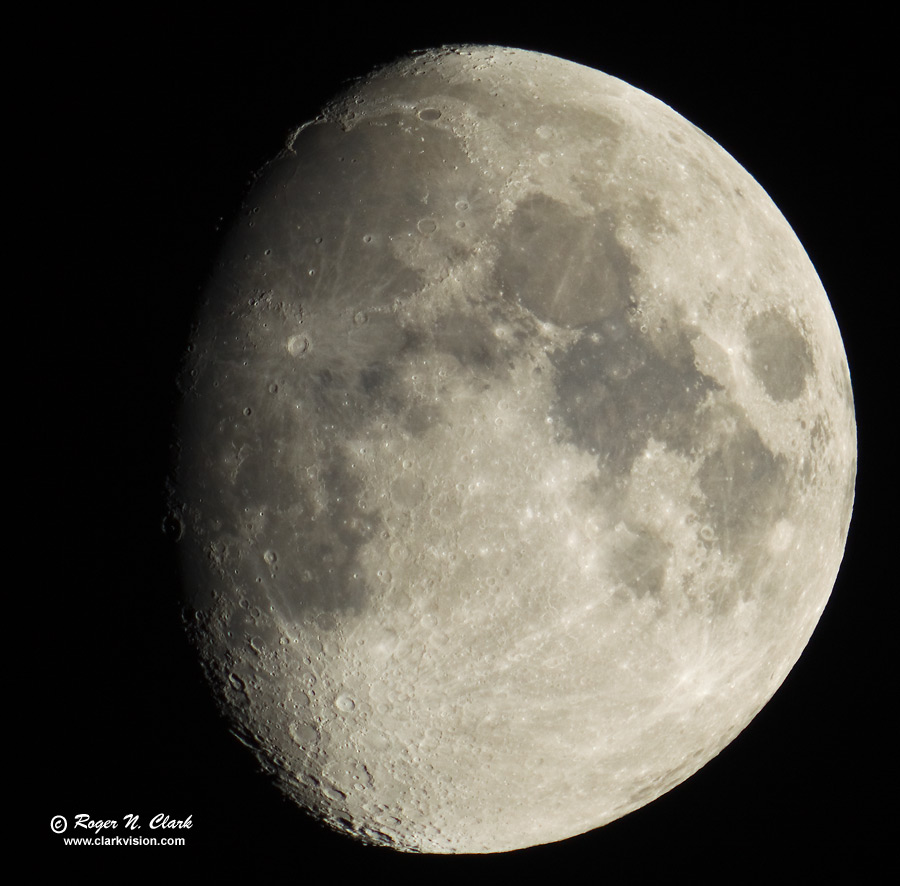| Home | Galleries | Articles | Reviews | Best Gear | New | About | Contact | Gallery Index | Previous |
Next |

| Home | Galleries | Articles | Reviews | Best Gear | New | About | Contact | Gallery Index | Previous |
Next |

Gibbous Moon on National Observe the Moon Night, September 18, 2010.
The image was produced with a Canon 1D Mark IV, 16 megapixel digital camera using a 500 mm f/4 L IS super telephoto lens with stacked 2X and 1.4x TCs. The f/ratio of the system was f/11.2. The 1D Mark 4 camera will autofocus at f/8 and stacked TC only report one, so the camera thought the system was at f/8 and autofocus was used for this image. I used mirror lock up with the camera on a tripod. Exposure was 1/100 second at ISO 200. This is a single frame image. The raw data were converted to a 16-bit tiff interpolated to 25 megapixels. During conversion, chromatic aberration and color balance were corrected. The image was then sharpened using Richardson-Lucy image deconvolution using a 5x5 box and 15 iterations then a 3x3 box with 25 iterations, and a small amount of unsharp mask applied. The plate scale of the original full resolution image was 0.84 arc-seconds/pixel and the raw-converted image 0.67 arc-seconds/pixel.. The diffraction spot diameter for green light is 2.1 arc-seconds (2.5 pixels), or 3.7 pixels in the full resolution image below. The image is diffraction limited. That is pretty good for a telephoto lens with stacked teleconverters.
For reference, 1 arc-second is 1/3600 of one degree or about the width of a human hair at a distance of about 50 feet (15.7 meters) (assumed a hair is 0.003 inch in diameter).
The full resolution image (1.2 megabytes) can be seen HERE. Note the sharp lunar edge is not perfectly round, but shows the mountains sticking up at the limb.
To learn how to obtain stunning images like this, please visit my Extensive Articles on Photography .
Keywords to this image = astrophoto-1 moon night
Image ID: moon_c09.18.2010_1d41400mm_e-900.jpg
| Home | Galleries | Articles | Reviews | Best Gear | Science | New | About | Contact |
Last updated November 08, 2025